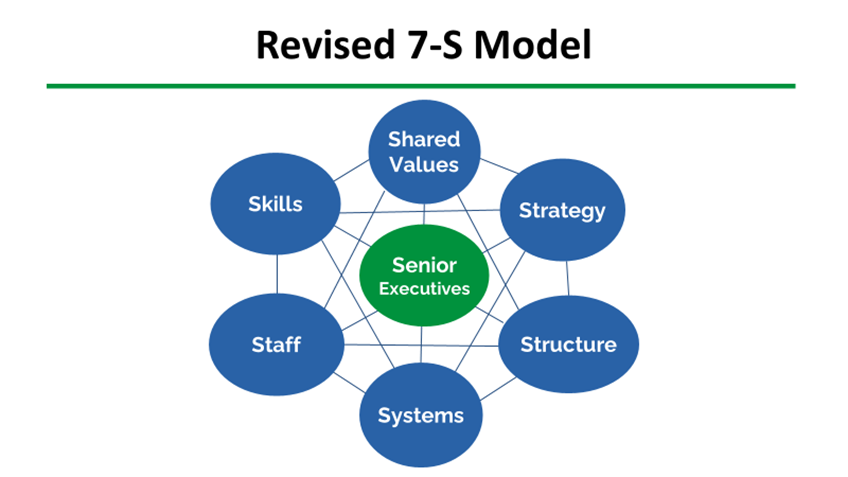From Smart Brief By PAUL B. THORNTON
Organizational alignment occurs when all parts of an organization work together in a highly integrated fashion to achieve the company’s strategic goals.
Highly aligned teams and organizations are a thing of beauty. Think about how amazing and exciting it is to watch these groups perform.
- Synchronized swim teams
- High performing pit crews
- Top performing athletic teams
- Your favorite orchestra
All team members understand their roles and responsibilities. Their actions are fully synchronized with those of other members. Everything is organized and executed to achieve the desired goals.
The group’s performance generates energy and excitement.
As noted in a blog post by the business consulting and training firm LSA-Global:
“It should not be surprising that aligned companies and teams consistently achieve higher performance, but our recent organizational alignment research results blew us away. Based upon 410 companies across eight industries, highly aligned companies grow 58% faster and are 72% more profitable while outperforming unaligned companies in terms of customer loyalty, leadership effectiveness, and employee engagement.”
Misalignment produces conflicts, confusion, inefficiencies, and low morale.
The 7S model
When I taught college courses on organizational behavior, I used a version of the 7S model as a framework to help students understand the importance of alignment in organizations.
The 7S model first appeared in the book “The Art of Japanese Management” by Richard Pascale and Anthony Athos.
In the June 1980 issue of Business Horizons, Tom Peters, Bob Waterman, and Julien Phillips published an article, “Structure Is Not Organization,” which discussed their view of the 7S model. This model became a basic tool of the consulting company McKinsey, where both Peters and Waterman worked as consultants, and where it’s called the 7S Framework.
The 7S model helps you see the big picture and the connections between seven important factors. Below is my version of the 7S model. The senior executives (the president/CEO and his or her direct reports) are those responsible for leading and aligning the organization.

Paul Thornton
Beyond the strategy, the senior executives must make sure all the other S-Factors are aligned with and support the company’s strategy. In highly aligned organizations, all the S-Factors work together in an organized, systematic, and integrated way.
Here are some examples of the relationships between and among the S-Factors.
- The company’s shared values need to support the strategy and create the desired culture. The senior executives need to model the desired values and hold the staff accountable to the same standards.
- The organizational structure needs to utilize all the company resources in support of the company’s strategy. The staff needs the required skills and values to operate in the structure and implement the strategy.
- The measurement and communication systems must provide accurate, relevant, and timely information to the employees (staff).
- The HR systems (hiring, promotion, training, rewards and recognition, and performance appraisal) need to include the required skills and shared values as part of the evaluation criteria.
While great organizational alignment produces great results, poor alignment creates waste, inefficiency, and a lack of focus on the strategic goals.
For example: At an offsite meeting to discuss strategy, one company discovered that fewer than 50% of their initiatives had any real relationship to the company’s five major strategic goals.
The senior executives need to make sure the strategy, structure, and systems work together in a highly integrated fashion. In addition, they must ensure the employees have the knowledge, skills, and motivation to execute the strategy.
Implementing change
One mistake that is often made occurs when a senior leader changes one of the S-Factors but doesn’t make corresponding changes to the other S-Factors failing to keep things aligned.
For example, if you are implementing a new performance management process, there is a high probability that other S-factors will need to change. Questions like these need to be addressed:
- Do the managers and leaders have the required skills to set goals, coach employees, and provide valuable feedback?
- Will the systems provide timely feedback to both employees and managers?
- Do the reward and recognition systems align with the goals of the new performance management process?
At every senior-level staff meeting, “alignment” needs to be a topic on the agenda. It’s important to discuss questions like the following:
- Do our products and services align with the changing needs and wants of our customers?
- Do the metrics indicate our strategy is working?
- Does the new initiative we are discussing align with our strategy?
- Do we have the right people in the right positions to execute the strategy?
- Are there any ongoing turf wars that need to be addressed?
- Does our behavior in the greater community align with our values?
How often do you discuss alignment at your staff meetings?
However, no matter how much time and effort you put into creating organizational alignment, misalignments do occur. Some misalignments occur slowly; others happen quickly due to significant changes such as acquisitions, mergers, high turnover, loss of a major customer, new competition, and government regulations.
Misalignment leads to ineffective behaviors. People focused on the wrong goals and priorities. It also results in waste due to conflicts, confusion, and doing unnecessary tasks.
Promptly identifying and correcting misaligned initiatives, policies and behaviors goes a long way to focus employees on what’s important and what’s needed to achieve their goals.
Alignment can move your organization from “good” to “great.”
Paul B. Thornton taught college courses in management and leadership for over 25 years. His latest e-books include:
- “Is Your Organization Aligned?”
- “Leadership-Perfecting Your Approach and Style”
- “Leadership Case Studies”
He has produced 28 short YouTube videos on various management and leadership topics. Email him.



